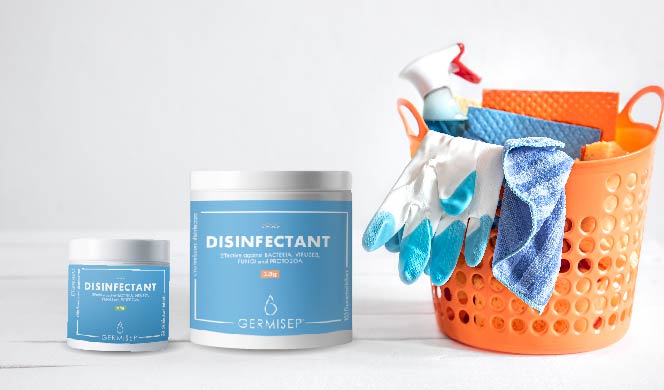

What is the Most Effective Way to Wash Fruits and Vegetables?
The Importance of Washing Produce
Raw fruits and vegetables can carry various microorganisms, including foodborne pathogens, posing a potential health risk if consumed without proper cleaning. Washing helps remove these contaminants, reducing the likelihood of illness.

Understanding the Contaminants
Before we delve into washing methods, it’s important to understand what we’re trying to remove:
- Bacteria and Viruses: Pathogens like E. coli, Salmonella, and Listeria can be present on produce surfaces.
- Pesticides: Chemical residues from agricultural practices can linger on fruits and vegetables.
- Dirt and Debris: Soil, waxes, and other physical contaminants can also be present.
- Common Washing Methods and Their Effectiveness Water Alone: Rinsing produce under running tap water is a basic and essential step. Water helps to remove dirt, debris, and some surface microorganisms physically.
- Commercial Fruit and Vegetable Sanitizer: Commercial Fruit and Vegetable Sanitizers are designed to enhance the cleaning process. These washes often contain surfactants that help lift contaminants from the produce surface. However, studies show varying degrees of effectiveness. Some commercial fruit and vegetable sanitisers have proven more effective than water alone in reducing bacterial populations.
- Vinegar Solution: Diluting vinegar with water (e.g., 1 part vinegar to 3 parts water) is a popular natural cleaning method. Vinegar’s mild acidity can help kill some bacteria.
- Salt Water: Another traditional method is to soak produce in salt water. The salt can help draw out dirt and potentially reduce the microbial load.
- Chlorine Bleach: While not recommended for home use due to potential toxicity if misused, diluted chlorine bleach (70 ppm free chlorine) has been used in industrial settings to sanitise produce.
- Electrolyzed Water: Electrolyzed water, produced through the electrolysis of sodium chloride, results in a highly acidic hypochlorous acid solution. Studies show mixed results regarding its effectiveness.
- Ozonated Water: It has been explored as a washing method, but its effectiveness can vary.
- The Verdict: What Works Best? Research indicates that while water alone is helpful, it may not be sufficient for removing all contaminants. Commercial Fruit and Vegetable Sanitizers can offer enhanced cleaning if used correctly. A study showed that Victory produce wash effectively reduced indigenous flora on lettuce. The key is to choose a reliable product and follow the instructions carefully.

Germisep: A Professional Solution for Enhanced Hygiene
Now, let’s consider a professional approach to sanitisation, as Germisep offers. Germisep specialises in hygiene and disinfection solutions, catering to various industries, including food service, healthcare, and hospitality. While the website provides multiple sanitisation products, the core philosophy is delivering practical and reliable disinfection methods.
How Germisep’s Principles Apply to Fruit and Vegetable Washing
Although Germisep may not directly offer a commercial fruit and vegetable sanitiser for household use, the principles behind their services can inform our approach to produce washing:
- Comprehensive Cleaning: Germisep emphasises thorough cleaning processes to eliminate pathogens and contaminants. This aligns with the need for a multi-faceted approach to washing fruits and vegetables, combining physical removal with sanitising agents.
- Targeted Disinfection: Germisep’s solutions are designed to target specific microorganisms. When washing produce, consider using sanitisers known to be effective against common foodborne pathogens.
- Safe and Effective Products: Germisep prioritises using safe and effective disinfectants. Similarly, when choosing a commercial fruit and vegetable sanitiser, opt for certified products that have undergone testing to ensure they are safe for consumption and effective at reducing contaminants.
- Preventing Cross-Contamination: The primary purpose of sanitisers in wash water is to avoid cross-contamination.
- Optimised Processes: Germisep focuses on optimising disinfection processes for maximum efficacy. In the context of produce washing, this means following recommended washing times and sanitiser concentrations.

A Step-by-Step Guide to Effectively Washing Fruits and Vegetables
Considering the above information, here’s a comprehensive guide to washing your produce:
- Start with Clean Hands: Wash your hands thoroughly with soap and water before handling any produce.
- Rinse Under Running Water: Rinse fruits and vegetables under cool tap water to remove loose dirt and debris.
- Use a Produce Brush: Use a clean produce brush to scrub away dirt for items with a firm surface, like apples and potatoes.
- Apply a Commercial Fruit and Vegetable Sanitiser: Follow the product instructions if using a commercial fruit and vegetable sanitiser. Generally, this involves soaking the produce in a diluted solution for a specific time (e.g., 1-2 minutes).
- Rinse Again: After using a sanitiser, rinse the produce thoroughly under running water to remove any residual solution.
- Dry Thoroughly: Use a clean cloth or paper towel to dry the produce. This can further help remove any remaining contaminants.
Additional Tips for Specific Types of Produce Leafy Greens
For example:
- leafy greens: like lettuce and spinach, separate the leaves and wash them individually. Consider using a salad spinner to remove excess water.
- Berries: Berries are delicate and can become mushy if washed too vigorously. Gently rinse them under cool water just before consumption.
- Root Vegetables: Root vegetables like carrots and potatoes often have a lot of dirt. Use a scrub brush to remove the dirt before washing.
Conclusion
Washing fruits and vegetables is a critical step in ensuring food safety. While water alone can remove some contaminants, using a commercial fruit and vegetable sanitiser can provide an extra layer of protection. By following a comprehensive washing process and considering professional sanitisation principles, you can confidently reduce the risk of foodborne illness and enjoy your fresh produce.